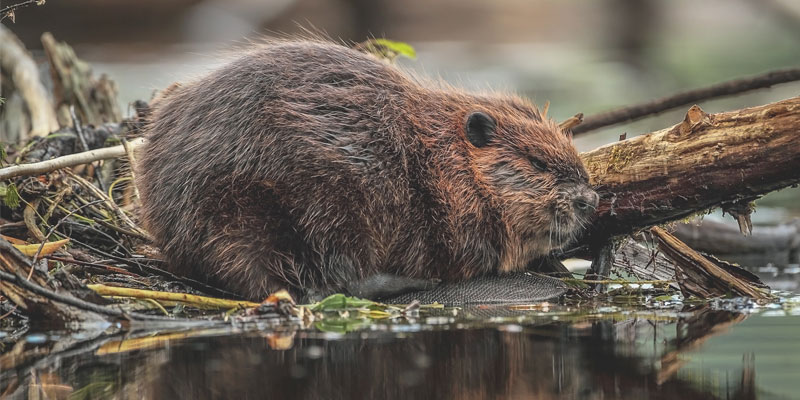The Aplodontiidae family consists of one species, Aplodontia rufa, the mountain beaver. Mountain beavers have no close relation to the North American beaver. The fossil record of this family extends back to the Miocene, with an early offshoot terminating at the now-extinct genus Myagaulidae, which were woodchuck-sized animals with horns extending from their rostra (noses). The family can be found in the Nearctic Region, from central California to southern British Columbia. They occur from sea level up to the tree line in high mountain peaks within the deciduous and coniferous forest, primarily in moist habitats. Mountain beavers are large rodents that weigh approximately 1.5 kg, with short tails and coarse dull, fur. They vocalize with booming and whistling sounds; when fighting they squeal and grind their teeth to make noise.
A. rufa live in complex burrows with openings that are covered with vegetation or sticks. The burrows have interconnecting tunnels that lead to chambers used for denning, feeding, and storage of food, fecal pellets and refuse. They spend around 75 % of their time inside the burrows, only moving around to areas in close proximity to their burrows (Zielinski et al. 2010). Although they are not a social species, they often build their nests in concentrated colonies with overlapping territories; there they defend their burrows from other individuals. From the close proximity of their burrows, these herbivores feed on forbs, grasses and ferns; while feeding the mountain beaver re-ingests its soft fecal pellets by catching the excreted pellets with its mouth, a process known as coprophagy.






